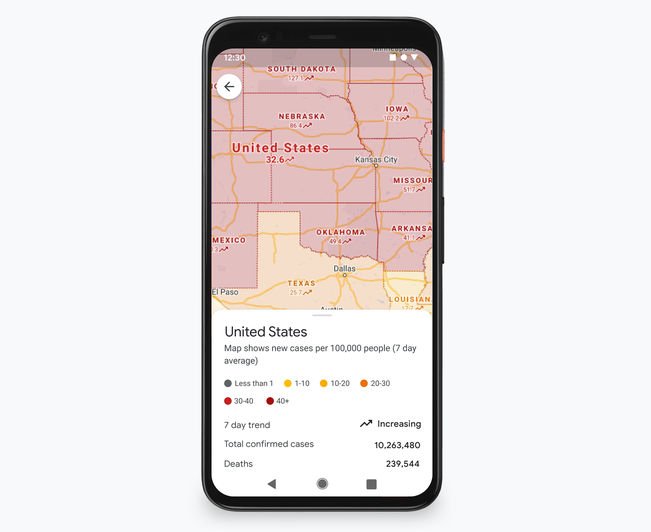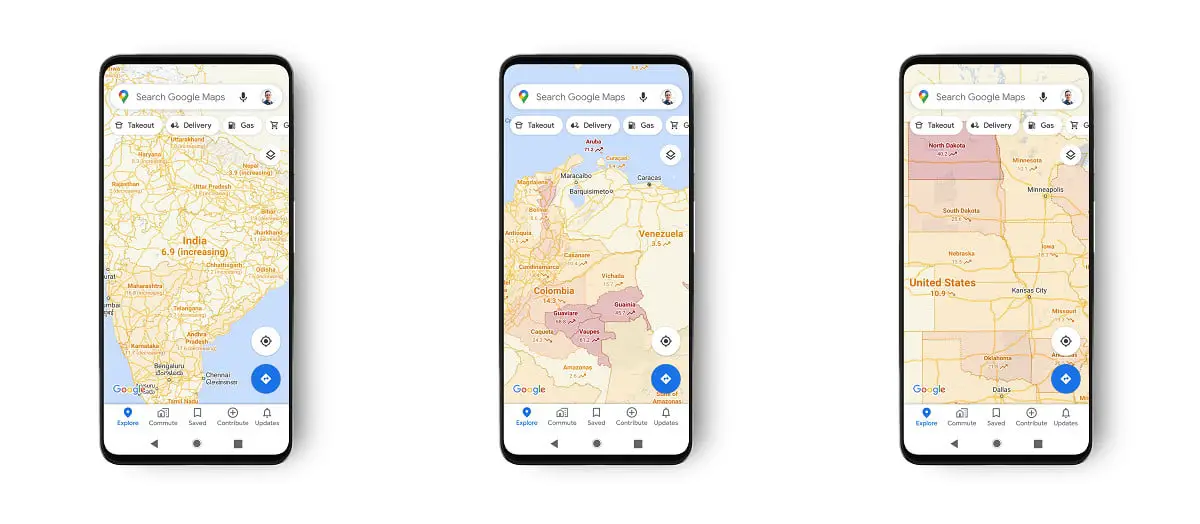Google Maps is improving its COVID-19 overlay. Google has developed a new set of features including the COVID-19 overlay that will soon be added to Google Maps in its iOS and Android mapping client. The goal is to increase information about the pandemic and anticipate the potential increase in citizen mobility over the Christmas holidays.
- Google Maps driving mode will be available soon
- Google is experimenting with an AI project that turns web pages into videos
- Google adds a free VPN to its Google One service
In September, the Internet giant added a specific layer to its geographic information service to make it easier to track the COVID-19 pandemic and specifically to visualize the number of confirmed cases and thus the degree of contagion in a given area. It can be activated from the overlay button in the upper right-hand corner of the interface.
Google uses information from “multiple authorized sources”, including what comes from government agencies, hospitals and the World Health Organization. The overlay provides a color-coded map based on the number of cases.

Now, Google Maps’ COVID-19 overlay will be expanded with new information related to a particular area. The application will show the total number of cases and deaths in a given area within 7 days with the upward and downward trend and it will indicate guidelines, restrictions, and information with links to local government COVID resources.
A function has also been implemented that will indicate the degree of congestion on public transport. It is based on real-time comments from Google Maps users and will be familiar to you as it is similar to the occupancy information now displayed in a store or restaurant.
The new features of the COVID-19 overlay of Google Maps will be added to the Android and iOS client worldwide in the upcoming weeks.
Any technological measure that helps is welcome because the pandemic is out of control worldwide. COVID-19 infections are over 55 million and deaths are over 1.3 million. And that’s only because of confirmed cases; the reality is much worse. The second wave is in full swing and it does not seem that we have learned anything from the first wave where management failures could be understood in the face of the surprising appearance of the coronavirus.





